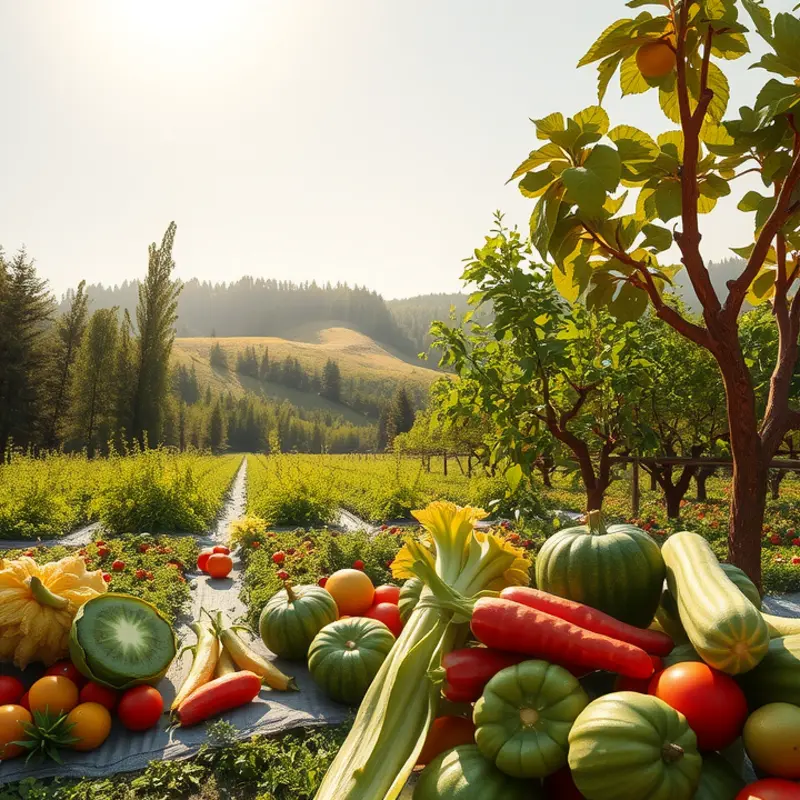Home cooks and health-conscious individuals alike understand the challenges of reducing sodium without sacrificing flavor. Salt-free seasonings are a game changer for those who want to enjoy delicious meals while maintaining a heart-healthy diet. This guide will introduce you to innovative flavorings, practical substitutions, and tips for incorporating them into your everyday cooking routines, making healthy eating simple and enjoyable.
Herbs and Aromatics: Nature’s Flavor Powerhouses

Herbs and aromatics are the silent heroes of culinary innovation, offering a wide range of flavors that can transform any dish into a flavorful masterpiece. Incorporating these flavor powerhouses into your cooking not only elevates the taste but also reduces the need for added salt—a significant bonus for those seeking healthier dietary options.
Herbs: Diverse Aromas for Every Occasion
Herbs are versatile, each bringing its unique essence. Basil with its sweet and slightly peppery notes works wonders in Italian dishes like pasta or pizza. It’s also brilliant in Asian cuisines when paired with citrus. Thyme offers an earthiness that complements roasted vegetables and meats. For a warming touch, try rosemary, which pairs excellently with lamb or potatoes.
Herbs can be used fresh or dried, with each form bringing different concentrations of flavor. Fresh herbs tend to have a lighter, more vibrant taste, while dried herbs offer a more concentrated flavor, ideal for soups and stews. Remember to crush dried herbs gently before adding them to your dish to release their oils.
Aromatics: Base Notes of Deliciousness
Adding aromatics like garlic, onions, and ginger can significantly enhance a dish’s flavor profile. Garlic provides a pungent, savory umami hit, essential in Mediterranean and Asian dishes. Combine it with onions for a sweet and tangy backbone that complements everything from stir-fries to stews.
Ginger offers a spicy, warming kick perfect for marinades, soups, and sauces. It also has the added benefit of aiding digestion and boosting immune function. For those who enjoy more exotic flavors, lemongrass brings a citrusy freshness often used in Southeast Asian cooking, perfect for curries and broths.
The Impact of Combining Herbs and Aromatics
The true magic of herbs and aromatics emerges when they are thoughtfully combined. A classic example is the bouquet garni, a bundle of herbs like thyme, bay leaf, and parsley used to infuse soups and stews with layers of flavor. Alternatively, create a paste with garlic, ginger, and cilantro for an aromatic base in Indian or Thai dishes.
Balancing flavors with the right combination of herbs and aromatics can elevate a dish beyond your regular fare, seriously reducing the need for added salt. Experimenting with these ingredients can lead to discovering new flavor synergies that jumpstart your taste exploration.
For more tips on enhancing flavors without added salt, explore this guide to flavor boosters, where you’ll find creative ways to enrich your cooking endeavors.
Incorporating these elements not only brings out the best in your culinary creations but also supports a healthier lifestyle by minimizing the reliance on salt for flavor.
Spices and Zesty Additions: A Flavorful Kick

Delighting the taste buds without salt can feel like a culinary conundrum. Thankfully, a vibrant world of spices and zesty ingredients stands ready to transform your dishes into masterpieces of flavor. These alternatives not only substitute for salt but also impart depth and character, allowing the natural essence of your ingredients to shine.
Spices are the backbone of flavor across global cuisines. Consider the warmth of cinnamon, the fire of cayenne, or the earthiness of cumin. A sprinkle of smoked paprika introduces a mild heat paired with a rich, woodsy aroma that elevates roasted vegetables or grilled meats. Similarly, the floral notes of cardamom can transform a curry into a fragrant delight, adding complexity without overwhelming. Experiment by mixing these spices to craft personal blends that reflect your unique taste.
Incorporating acids into your cooking is another technique to enhance flavor profiles without relying on salt. Fresh lemon or lime juice offers a bright, sharp edge to dishes, balancing richness and countering bitterness—perfect for salads or seafood. Vinegars, such as balsamic or apple cider, introduce tang and slight sweetness. A dash can liven up sauces or soups, creating layers of taste that captivate the palate.
Adding a hint of sweetness provides yet another dimension to savory dishes. Natural options, like honey or maple syrup, integrate seamlessly into marinades or glazes. The slight caramelization from these sweeteners during cooking adds depth and delectable aroma. Pair them with bold spices like ginger or mustard seed for a complex contrast that doesn’t compromise on flavor depth.
For culinary adventurers, delving into more exotic spices opens the door to diverse flavors. Za’atar, a blend of thyme, sesame seeds, and sumac, infuses dishes with a harmonious balance of nutty and citrusy notes. It’s superb when sprinkled over roasted vegetables or flatbreads. On the hotter side, berbere, an Ethiopian spice mix, combines chili peppers and warm spices, spicing up stews with an intricate blend of heat and fragrance.
Another intriguing avenue is the utilization of herbs alongside these spices. Fresh herbs like basil, cilantro, and dill can create vibrant finishes to dishes, complementing other seasonings effortlessly. Beyond just garnish, they pack subtle freshness, enhancing both aroma and taste.
To maximize the potential of these spices and zesty components, consider proper storage strategies to preserve their potency and freshness. For guidance on safer storage of spices and sauces, this article provides valuable insights.
Unlocking the full potential of your cooking begins with embracing these bold, multifaceted alternatives. Start experimenting to find the right balance that not only substitutes for salt but surpasses it in creating superior tasting creations. The essence of great cuisine lies in pushing boundaries and celebrating the art of seasoning without constraints.
Final words
Transitioning to a salt-free cooking approach may seem daunting, but with the right ingredients, it can be both flavorful and fulfilling. By choosing fresh herbs, spices, and aromatic add-ins, you can elevate your meals while keeping your health in mind. Remember to experiment with different combinations and find what invigorates your palate. Healthy cooking can be exciting, delicious, and satisfying, leading to creative culinary adventures that benefit both your wellbeing and taste buds.







